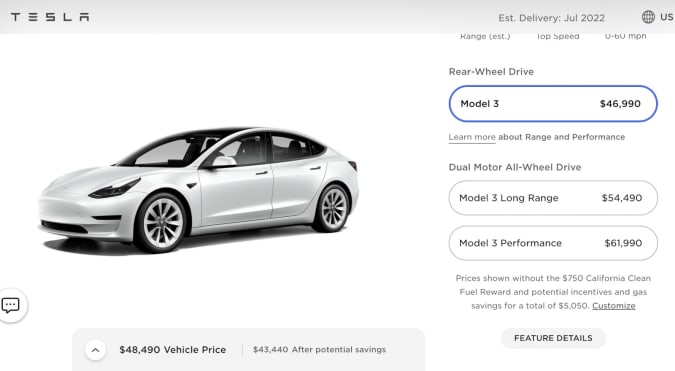Mass transit has made a rebound with the return of city life post-Covid 19, and today a startup that’s building tech to help it run more smoothly is announcing a big round of funding to meet the rush. Optibus, which uses AI to help public transportation bodies and their mass transit partners plan and operate their networks, has raised $100 million, funding that it will be using to continue expanding its product set and wider business footprint, CEO and co-founder Amos Haggiag said in an interview in London this week.
The Series D funding values Optibus at $1.3 billion, which the Israeli startup says makes it the first “unicorn” in the public transportation tech space.
Insight Partners, Bessemer Venture Partners, Verizon Ventures, Pitango First & Pitango Growth, Tencent, SOMV Momentum are among the investors in this round, which is brings the total raised by the startup to $260 million and is coming about 14 months after Optibus raised $107 million in a Series C at a $400 million – $500 million valuation.
That’s a big leap, but in a period where a lot of growth-stage startups have found it a challenge to raise more money, Optibus stands out as an example of how the right mix of timing and traction can still close deals.
The company now has customers in over 1,000 cities, double the number of a year ago; and its employees have also grown to 300 (up from 120). In total, Optibus is being used to track and power about 2.5 billion trips on buses, on-street trams, light rails and subways annually around the globe. (Note: in the public transport push for more multi-modal options for users, Optibus also incorporates data about public bike, scooter and taxi access points but doesn’t provide data about their movements — not now, at least.)
Optibus’s rise underscores to a critical moment for the world of public transportation.
Mass transit services like buses and subways took a huge hit in the last couple of years, with numbers of users declining by some 80% globally in the wake of Covid-19: people stayed home more to work; when they did go out, they generally wanted to avoid contact with others and crowds so stayed off public transport; and public transport organizations themselves also reduced services and passenger flow to fit with public health rules.
That has largely come back now, with average numbers now at 80-90% of where they were pre-Covid, Haggiag said. But that’s not the full story.
Even before Covid-19 hit, he added, mass transportation use was seeing a general decline in a number of cities as people were choosing to walk, bike, and scoot — or order rides from the new wave of e-hailing taxi-type services — alongside the ever-popular option of using their own cars.
But at the same time, he added, cities are growing, with the concept of “mega city” becoming more common and… more mega, and that is playing out in a surge for needing more mass transit.
“By far one of the biggest demographic changes in our time and in history will be the mega city,” Haggiag said. “We’re not talking hundreds or thousands or even millions more people in in cities, but billions.”
So while Optibus is often parachuted into already-established public transportation systems — where “Everything is old tech, or just no tech at all,” in Haggiag’s estimation — it is also finding a new wave of greenfield projects in emerging markets where the mega city trend is really surging. In one example, it’s working with Kampala in Uganda to build a new bus system from scratch, he said.
This is playing into how Optibus itself is growing as a business.
The startup first made its name by way of its AI-based planning tools — used to help transportation organizations ascertain how best to manage mass transit resources against rush hours, slow periods, social distancing rules and more, which they in turn also used to share data with to customer-facing services like real-time, third-party navigation apps.
Now, Optibus is moving into a wider set of features. These include, most recently, a new analytics engine, called Ridership Insights that provides more granular data based on routes, including boarding and alighting data based on time and date, to make more informed planning decisions.
And, coming in June, it will be launching an operations stack that will give its customers an end-to-end platform for people management, and to provide real-time data and services to their drivers and other employees. This potentially will expand to include systems that replace the radio systems that bus drivers use to get updates on, say, a sudden traffic change due to an accident on the route.
Optibus is building a lot from the ground up, but it has also been snapping up smaller transport startups to bolt on new tech and services. Last month, it announced the acquisition of Portland, Oregon-based Trillium, which it acquired for around $10 million. To complement Optibus’s existing B2B platform, Trillium has built tech to provide data to passengers, used both to populate more accurate data in third-party navigation apps but also potentially for transportation operators to build and provide their own apps, by way of a white-label service.
“Transport agencies understand that most of the world uses apps like Google Maps so the first focus is to make sure that the data is super accurate for those,” Amos Haggiag. But building their own apps is a no-brainer, a way to provide more direct information and to glean more data about their customers and their usage, to sell tickets directly and more. “There is a chance to show all of that more immediately in apps,” he added.
In terms of competitors, Haggiag said that there are a number of localized players providing parts of the “tech stack” — if you could call it that — services to help monitor traffic and send out messaging to users, and ERP and CRM systems that are used by organizations but do not join up with the data showing now networks really work. Joining all of that up together is what seems to be attracting the customers.
“Optibus combines innovation and public transportation expertise like no one else in the industry. Their software is revolutionizing our business and day-to-day operations, as well as the passenger experience. Optibus is the future of public transportation and we celebrate this fantastic milestone with them,” said Carla Stockton-Jones, UK MD at Stagecoach Group, the largest public transport operator in the UK, in a statement.
“Optibus has modernized the industry and helped cities around the world bring quality and reliable transportation to their residents. As long-time investors in the company, we’re excited to continue our partnership with Amos and the team,” said Teddie Wardi, MD at Insight Partners in a statement. “We look forward to working with Optibus as they continue to grow and scale up.”
“For SOMV Momentum, Optibus represents everything that is great in tech; digitizing and disrupting the basic functions of society in a way that serves the common good, both in quality of service and environmental impact, whilst also being an island of solid growth, which is of prime importance for us in current market conditions,” added Merav Rotem Naaman, general partner at SOMV Momentum. “We are very proud to be continuing this journey with Amos and his amazing team.”



